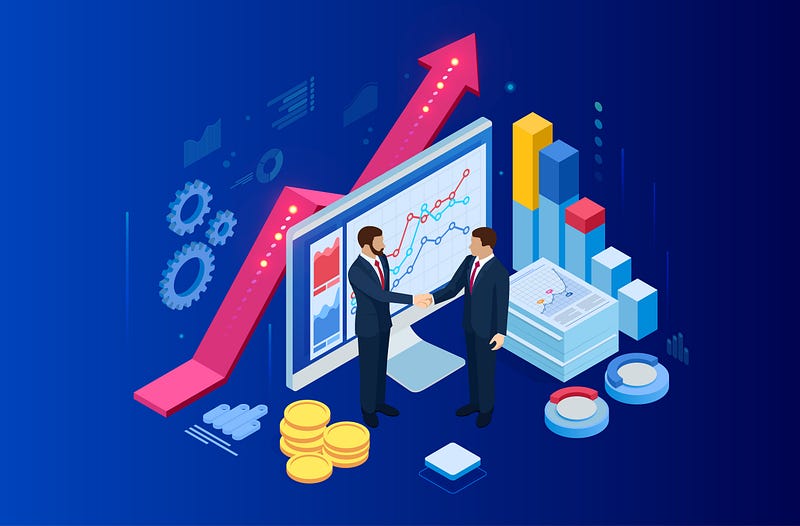Often, out of fear of the unknown when it comes to sales, entrepreneurs resort to what I believe to be the worst possible solution: hiring a Vice President of Sales too early

I focus on seed stage investments in B2B enterprise software companies. Most entrepreneurs I invest in are first-timers. A concern common among them is not about recruiting their core R&D team or building their product. They believe they know what they’re doing in these domains.
So what are they worried about? Sales.
It’s a natural concern, as the typical background of these Israeli entrepreneurs usually includes service in one of the elite technological units of the IDF. This experience gives them the confidence that they have what it takes to get stuff done. Specifically, they have access to the initial outstanding engineering talent they need as a result of their military network, and they have an idea that burns through them which provides the necessary vision to build a great product.
But then comes sales.
They have a plethora of options and questions and, being first timers, it’s quite natural that they worry most about what they know the least.
Is it a product that requires inside sales, a wine-and-dine salesperson, or both? How should leads be generated? Through investing in lead-gen (e.g. content, paid traffic)? By spending time and money on conferences? Do mass-email campaigns to potential clients, using purchased email address databases, work? Should they hire an external lead-generation company? Is the product ‘self-serve’ or will it require putting in place a pre-sales team to support the sales efforts? Should pilots be offered, and if so, should they be paid or free? How should the product be priced? Should potential partners or sales channels be courted and when and at what terms? Which geographies should be the initial focus? And once they hire their sales team, should it be centrally based, geo-spread and where? Which vertical (if their product fits several) should they go after first? Should target customers be the smallest potential customers, the largest or in between? And by which measure should a potential customer’s size be defined?
To make matters even more complicated, the more time spent with potential customers and the market, the more questions arise. And while these are of course all key questions, there are no cookie cutter answers. Moreover, at this stage in the life of the company, they can’t possibly do more than make educated guesses, and keep worrying about the ‘unknown unknowns’ — that is, the other questions they don’t even know they should ask.
Often out of fear of the unknown when it comes to sales, entrepreneurs resort to what I believe to be the worst possible solution: hiring a Vice President of Sales too early. In a hopeful attempt for a “Deus ex machina” type of solution, founders hope that the answer to all of their questions is hiring an experienced sales executive, freeing them to focus on what they know best -building a great product.
I think this is a critical mistake, and while the questions above do need to be addressed, I would like to suggest a very different approach.
Entrepreneurs must always be selling. Irrespective of being introverts or extroverts, having no sales experience, or being madly in love with technology alone. Entrepreneurs sell their passion and vision to their friends and family. They sell their vision to current and future investors. They sell themselves to potential employees. They sell their value and vision to potential clients and partners. And this selling never stops.
Being an entrepreneur is first and foremost about selling, you cannot outsource it, you have to master it. Only then can you seek help.
So while the sales questions above (and many others) absolutely have no cookie cutter answers, I do want to offer a cookie-cutter process.
– Don’t hire any salespeople (yet)!
– Your main task as the founder / CEO is to convince the first account(s), to give you a shot. It’s your vision they’ll buy into. And by “giving you a shot” I am referring to supporting you with feedback on your product (aka design partner), and allowing you to test your product in their environment (aka a POC/proof of concept).
– How do you find these first potential customers? In any way possible. You beg, hustle and sell.
– You then aim for what comes before the well known product-market fit: you aim for the POC market-fit.
What is the POC market-fit? It’s the first magic moment a company has.
It’s when a company’s first, scrappy, limited in functionality, buggy Proof-Of-Concept product is deployed and used within a friendly customer environment, and when the time comes to wrap up the evaluation, the customer says NO. No to stopping the pilot. No to turning the system off.
It’s binary: either the customer doesn’t yet care much about the product, or the product already provides so much value, that the customer insists on using it more.
Haven’t reached a POC market-fit? Then keep iterating until you do. Any further progress (such as hiring a salesperson) at this stage, will only cloud the key issue, of not yet having a POC market fit.
While there are successful companies, that were built on products that were only nice to have, trust me, they suffered every step of the way.
At this stage of your startup life, an entrepreneur should not yet worry about the major sales questions (some of which I listed earlier) such as model, pricing, sales technique, friction. There’s too much unknown, to be able to even begin exploring them concretely.
They need only aim for the first ground truth: A POC market-fit. Measured by the first supportive account(s), who insist on using your product, and refuse to allow you to end the POC.
So you had your POC market-fit. What’s next?
Next is the non-scalable sales approach. Not yet hiring any external and experienced salesperson. At this phase, the goal is to get 3–4 customers to pay (and use!) your product.
I call it ‘non-scalable’ because at this stage of a company’s lifecycle it’s not yet problematic to be spending more money on sales or travel costs than the actual contract value you receive. The only important thing at this phase is getting someone to pay for your software. And to use it. Heavily.
Once you’ve won these 3–4 paying accounts — congratulations, dear entrepreneur! You already know more about sales, pertaining to your company and product, than you did at the start. And likely by now, you know more than many “experts” as well. More importantly, you’ve proved that your product has value.
Next comes Validating the Business Model. This is where pricing, sales model and costs come into play. While winning the first paying customers can be done in an almost nonsensical economical structure, there now needs to be an honest appraisal of the sales approach, the costs of the sales operations, and potential revenue from an account.
To take this to the extreme: if closing a deal requires multiple on-site visits at a customer account, a prolonged and highly hands-on pilot, but the value of the product (i.e. what the customers are willing to pay) is only a fraction of these costs — Houston, we have a problem.
When it comes to enterprise software companies, there are multiple potential sales models that all fall somewhere between the following ends of the spectrum: on the one end is online with zero-touch for sales and delivery (which works only if delivery of the product is frictionless, and the buying decision is very localized) and on the other end, requires multiple customer visits, many divisions and decision makers buy-in, after a prolonged pilot (typically requiring IT support) with multiple vendors competing.
Once you’ve demonstrated you can win your next 3–4 accounts in a way that supports a reasonable business model — congratulations once again! You’re one step closer to having a company.
In my opinion, this is the time to hire the first salesperson.
By now you should have a much better grasp of your target customers, sales model, and how sales work, as you’ve done it all yourself. This allows you to pick the right salesperson. With an emphasis on hiring quota-carrying salespeople, and managing them directly. No middle layer, no Vice President of Sales. Only once these first salespeople successfully start closing new business and it’s time to scale the sales operation, will it be the time to start looking for that amazing vice president of sales.
Quick Summary:
If you are a seed company, in the enterprise B2B space:
- Don’t hire any salespeople, yet.
- Aim for the POC market-fit milestone. Iterate until found.
- Next, aim for 3–4 paying customers, in the Non-Scalable sales approach. With no salespeople.
- Next analyze the business viability of your product, based on potential price and sales approach. And aim to win your next 3–4 paying customers, now in a business model viable way.
Only then should you hire your first salespeople. Note: they could be inside-sales, or lead-gen, or wine & dine salespeople, or a combination: by now you’ll have the data to base your decisions on. Another important note regarding hiring your first salespeople: they should always be hired in even numbers. This creates healthy internal competition, reduces risk, allows easier action to be taken on wrong hires. Only once these salespeople successfully start closing business, it’s time to start looking for your Vice President of Sales.
Entrepreneurs must never be dogmatic. There are plenty of successful differing approaches, that at times depend on a very lucky hire. There are cases where the team has internal sales talent and experience, or where the possible sales model is crystal clear from day one. The above is an alternative approach, aimed towards reducing risk (at the expense of time, and a delayed start to hiring your sales team) by allowing the entrepreneur / CEO to formalize his or her number one priority, which should always be selling.




